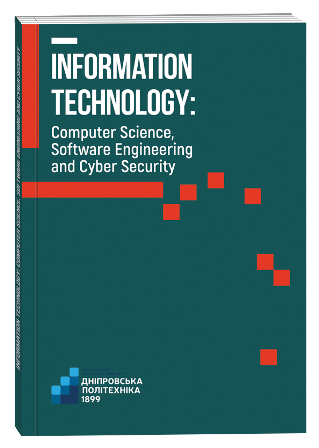CRITICAL ASPECTS OF BIG DATA PROCESSING TO ENSURE ITS PROTECTION IN DISTRIBUTED NETWORKS
DOI:
https://doi.org/10.32782/IT/2025-1-9Keywords:
big data, distributed networks, cybersecurity, information protection, cryptography, homomorphic encryption, anomaly detection, machine learning, blockchain, risk management, privacy, data integrity, cloud technologies.Abstract
The article examines in detail the critical aspects of big data processing in distributed networks, which pose a modern challenge for ensuring cybersecurity. The purpose of this work is to conduct an in-depth analysis of theoretical and practical approaches to solving the problems of confidentiality, integrity, and availability of data in multi-user environments with high interaction complexity. Particular attention is paid to the classification of threats that arise when processing large amounts of information, taking into account the specifics of distributed systems architectures, such as cloud technologies, peer-to-peer networks, and infrastructures with a high level of decentralization. The main vulnerabilities arising from the dynamic nature of data processing in such environments were also analyzed, including: asynchronous access, limited computing resources, complexity of synchronization of operations, and risks of interception of information during transmission. Scientific novelty. Mechanisms for ensuring security at the level of network interaction are discussed, including the use of blockchain technologies for event auditing and transaction tracing. Conclusions. Particular attention is paid to methods for protecting big data, in particular cryptographic approaches such as homomorphic encryption (Rahman, 2022, p. 8–11), computational complexity-based confidentiality protocols, and distributed key management mechanisms. Additionally, methods for detecting anomalies in behavioral patterns of systems based on machine learning (Syed, 2021, p. 4–6) and deep learning algorithms are considered, which allow for effective identification of potential threats in real time.
References
M. S. Rahman and H. Reza, “A Systematic Review Towards Big Data Analytics in Social Media”, in Big Data Mining and Analytics, vol. 5, no. 3, pp. 228–244, September 2022, doi: https://doi.org/10.26599/BDMA.2022.9020009
D. Syed, A. Zainab, A. Ghrayeb, S. S. Refaat, H. Abu-Rub and O. Bouhali, “Smart Grid Big Data Analytics: Survey of Technologies, Techniques, and Applications”, in IEEE Access, vol. 9, pp. 59564–59585, 2021, doi: https://doi.org/10.1109/ACCESS.2020.3041178
X. Sun, Y. He, D. Wu and J. Z. Huang, “Survey of Distributed Computing Frameworks for Supporting Big Data Analysis”, in Big Data Mining and Analytics, vol. 6, no. 2, pp. 154–169, June 2023, doi: https://doi.org/10.26599/BDMA.2022.9020014.
J. Liao and J. Lin, “A Distributed Deep Reinforcement Learning Approach for Reactive Power Optimization of Distribution Networks”, в IEEE Access, том. 12, стор. 113898–113909, 2024, doi: https://doi.org/10.1109/ACCESS.2024.3445143
D. Park, S. Kang and C. Joo, “A learning-based distributed algorithm for scheduling in multi-hop wireless networks”, in Journal of Communications and Networks, vol. 24, no. 1, pp. 99–110, Feb. 2022, doi: https://doi.org/10.23919/JCN.2021.000030
M. W. S. Atman and A. Gusrialdi, “Finite-Time Distributed Algorithms for Verifying and Ensuring Strong Connectivity of Directed Networks”, in IEEE Transactions on Network Science and Engineering, vol. 9, no. 6, pp. 4379–4392, 1 Nov.-Dec. 2022, doi: https://doi.org/10.1109/TNSE.2022.3200466
T. Lenard, A. Collen, M. Benyahya, N. A. Nijdam and B. Genge, “Exploring Trust Modeling and Management Techniques in the Context of Distributed Wireless Networks: A Literature Review”, in IEEE Access, vol. 11, pp. 106803–106832, 2023, doi: https://doi.org/10.1109/ACCESS.2023.3320945







